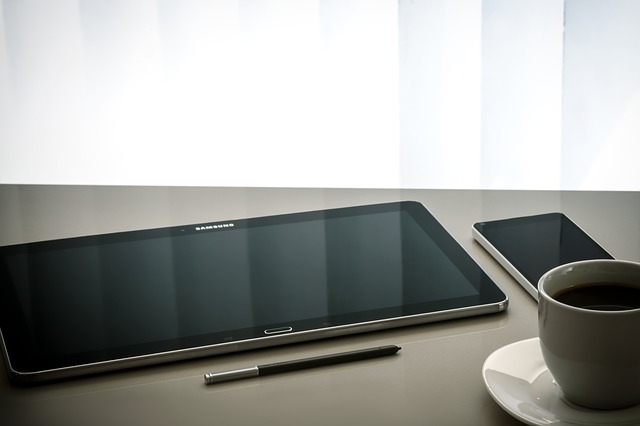Various mobile devices accompany various processes and procedures in everyday private and professional life in the age of steadily advancing digitization. Many areas are unthinkable today without a tablet, notebook or the practical 2-in-1 devices – the convertibles.
Tablet: the mobile small format

The larger surfing and gaming alternative to smartphones: the tablet
The small portable devices are well suited for private use and for surfing, accessing information and playing videos in everyday office life. Many companies are increasingly relying on modern technology, which can be used anytime and anywhere thanks to WLAN. After all, 61% of German companies enable mobile work. The handy format can be optimally stowed away and takes up little space in a backpack, briefcase etc. Tablets are equipped with a processor, graphics card, apps and the associated operating system such as iOS, Android or Windows. Graphically complex games and programs are not recommended with these devices. The main advantages are mobility and that the end devices are available in many different versions.
Being available, working and receiving emails anytime, anywhere is no longer a luxury, it is standard. However, the rapidly changing digital landscape means that it is all the more difficult to choose a device and the right software and hardware. This is remedied by online comparison portals, which contrast the advantages and disadvantages of the most common types of portable devices. The direct comparison of the data immediately shows the differences: year of manufacture and market launch, sales prices, dimensions, weight, display technology and size as well as resolution and pixel density, processors and batteries used, software and much more are important criteria that simplify the purchase decision.
Notebook: the classic

Practical in many areas of life and work: the notebook is and remains a classic.
The classics among mobile devices are notebooks, which does not mean that they are not up to date in terms of technology, function, software and hardware. On the contrary, notebooks offer versatile functions and can be used on the go. Unbeatable advantages are the upgradeable and upgradeable hardware as well as a balanced working temperature of the mobile devices. The notebooks cut a fine figure, especially when it comes to graphic and processor-intensive work. In contrast to the tablet, which can be operated by touch, the laptops have a built-in keyboard as well as an integrated mouse and the possibility of connecting external devices. The numerous display sizes are designed for different needs, as are the interfaces, which range from USB to HDMI. All of this makes the notebook a real workhorse.
Convertible: The ingenious combination device
If you have a difficult choice between tablet and notebook, choose the modern 2-in-1 device called convertibles. The end devices have both a touchscreen, which makes them operable like a tablet, and a connection for a keyboard, so that the convertibles become a notebook. Flexibility is a decisive advantage over the other two product groups. Convertibles can be used on the go, at home and in the office and work with the same software. Time is saved by not having to compare the mobile device with the stationary PC. Some models can also be controlled with a pen, which is useful for presentations or customer appointments as well as for graphic work. The clever combination device is a powerful all-rounder with multitasking character.
The choice of the mobile device depends on the area of application
When comparing notebooks, convertibles and Co., both differences in terms of battery life, performance and price can be determined. The area of application plays a major role in the purchase. A light, handy tablet is ideal for internet research and private purposes. The notebook has more power to offer, which also promises sufficient flexibility in everyday work. Convertibles offer both and are an ideal choice for everyone who travels a lot and does not want to do without the convenience of a laptop. Digitization is also finding its way into private life. Already 48% of the upcoming Generation Z, i.e. the 6- to 7-year-old users, are regularly on the Internet – an unstoppable development.
Pixabay @ Photo-Mix (CC0 Creative Commons)
Pixabay @ Free-Photos (CC0 Creatives Commons)